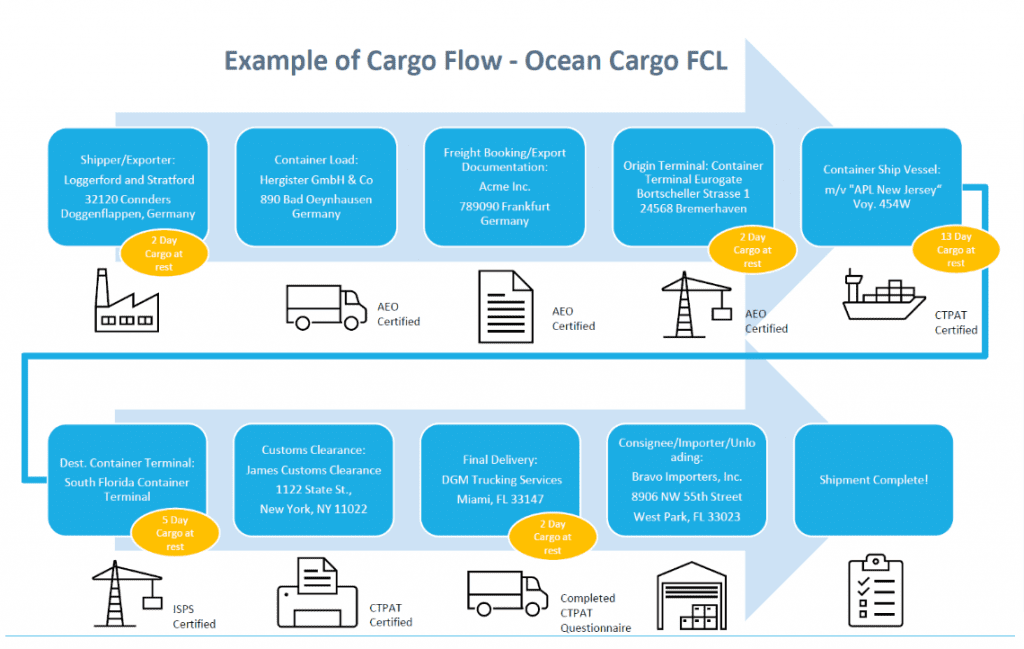Why Importers and Consolidators Need a Bond for CTPAT
Are you an importer, or consolidator? If so, the CBP requires that you maintain a customs bond to get CTPAT certified. These bonds come in different...
Earning your Customs-Trade Partnership Against Terrorism (CTPAT) certification is no small feat. It’s a complex process that requires a great deal of time and resources. Once you’re certified, it opens the door to more business opportunities and streamlines U.S. Customs and Border Protection (CBP) processes like entry inspections.
After going through the effort of obtaining your certification and participating in the benefits it brings, the last thing you want is to get suspended for not properly training your employees and business partners.
Fortunately, a comprehensive CTPAT training program can help ensure you consistently meet CBP requirements. Today, we’re covering what CTPAT training looks like and how Veroot helps companies maintain compliance with ease.
In June 2020, the CBP released changes to the Minimum Security Requirements (MSC) for the CTPAT program, outlining how shippers must provide evidence of their trade compliance. In particular, Section 12 in the MSC covers how security awareness training must be conducted and documented.
CTPAT security awareness training is vital because it helps you retain your CTPAT certification in three crucial ways:
A thorough, updated CTPAT training program covers all the bases required to obtain and maintain a CTPAT certification. It should detail processes for internal and cargo security as well as steps for ensuring any suppliers and business partners you work with also follow security best practices.
In all, there are more than 160 regulatory aspects of CTPAT that a company must address, and all of these should be covered in your training.
Some individuals will need more specialized training than others. For example, anyone engaging with cargo and warehouses will need to know how to conduct inspections and agricultural pest checks. Site managers will need additional education on building security processes like physical security, cybersecurity, and emergency procedures.
If your training fails to cover these compliance essentials, it could put your CTPAT status at risk which can have a negative ripple effect across the company.
Comprehensive CTPAT training covers a lot of information, and developing these sorts of training materials on your own can be annoying - not to mention it requires a great deal of time, effort, and budget.
Due to the myriad of regulations, most of this educational content isn’t easy to develop. For example, if you want to create videos of container inspections, you would have to fly a production team out on the field, locate an empty container, and film an expert following your inspection process, as well as what to do if they discover a problem. You also have to ensure your compliance team is staying fully up to date on all the latest CBP requirements and updating training materials when new requirements are released.
To help alleviate this burden, Veroot has developed a robust CTPAT training program that includes high-definition videos (which can be customized with your company branding). Veroot also offers best-in-class slide presentations, paper-based training PDFs, and a quiz to help confirm your workforce’s knowledge retention. You can easily access these materials through the Veroot platform or upload them to your company’s learning management system (LMS).
The Veroot team is dedicated to ensuring all materials reflect the most recent CBP requirements so you can rest assured your organization always has access to the most accurate training. Plus, you can easily send, track, and manage all training SOPs from a centralized dashboard and easily access documentation should CBP request you to provide proof of training.
By leveraging the Veroot CTPAT training program, you’ll save countless hours and enjoy the peace of mind that comes with knowing you’re doing everything possible to keep your CTPAT certification.
Learn more about the CTPAT training solution and how it can help your organization. Contact us today.

Are you an importer, or consolidator? If so, the CBP requires that you maintain a customs bond to get CTPAT certified. These bonds come in different...

Whether you’re already CTPAT certified, currently working on your application, or just starting to explore the process, you’ve likely realized that...

Whether you’re new to CTPAT certification or are preparing for validation or recertification, the U.S. Customs and Border Protection’s (CBP)...
